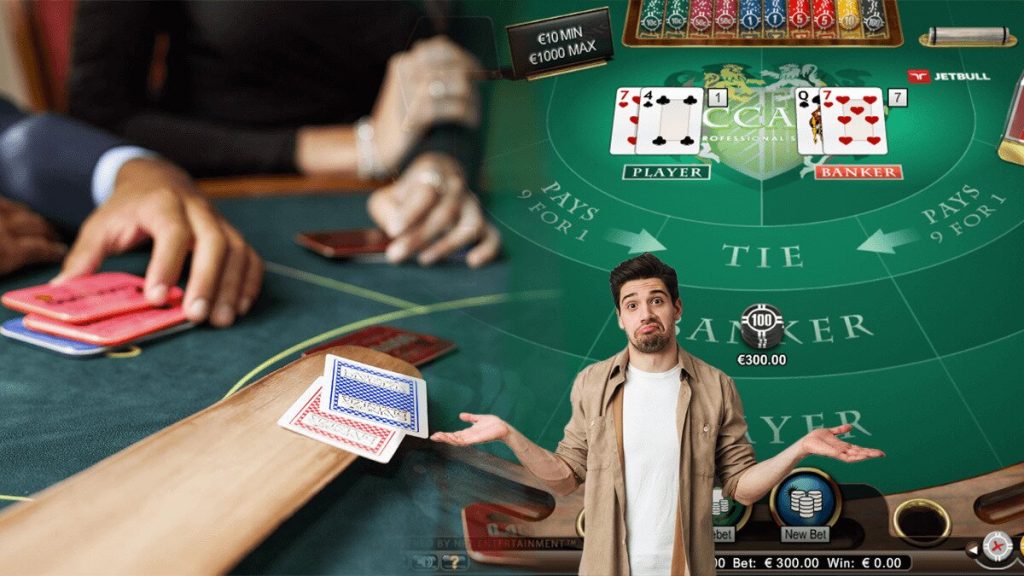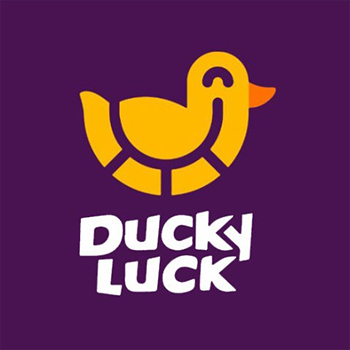Chemin de Fer Baccarat
If you are an avid gambler or simply looking for a thrilling game to play, you might have come across the game of baccarat. Baccarat is a classic casino game that has been around for centuries and has been a favorite of many high rollers. One variant of this game that has gained popularity is Chemin de Fer Baccarat. In this article, Baccarat-Tips experts will explore what Chemin de Fer Baccarat is, how to play it, and some tips on how to increase your chances of winning.
What is Chemin de Fer Baccarat?
Chemin de Fer Baccarat is a French variation of baccarat that originated in the late 19th century. The game is played with six decks of cards at the shoe and can have up to 12 players at a time. In this variant of the game, players take turns being the banker, and the banker’s position rotates counterclockwise around the table.
History of Chemin de Fer
Contrary to what one might read on our History page, the original baccarat variant is not Chemin de Fer. The name of this game in French literally translates to “iron road” or “railway,” yet railways were only brought into France in 1834 – hence proving that Chemin de Fer was not the precursor of modern day baccarat as initially thought.
Baccarat traces its roots back to Renaissance Italy in the 15th century, and later evolved into Chemin de Fer – a favorite of French aristocrats. Even after gambling was outlawed in 1837, individuals continued playing it illegally throughout Europe and Britain – gaining immense recognition amongst their citizens.
The first Chemin de Fer gaming table in Las Vegas debuted in 1959, branded as “Chemmy.” Although there are records that indicate the game was being played in America since the late 1800s. Unfortunately, its reign ended when Punto Banco emerged onto the scene and quickly became a hit at casinos across the country. Today, it is still one of most popular baccarat variations you’ll find at American casinos.
How to Play Chemin de Fer Baccarat?
The objective of the game is to have a hand with a value closer to nine than the banker’s hand. Cards are assigned values as follows:
- Ace: 1 point
- Cards 2 to 9: Face value
- 10, Jack, Queen, King: 0 points
To start the game, each player places their bet on the table. The player sitting in the banker’s position shuffles the cards and passes them to the player to their right, who then acts as the dealer for the round. The dealer deals two cards to each player, including the banker, and the players can choose to bet on the banker’s hand, their own hand, or a tie.
If either the player or the banker has a hand that totals eight or nine, this is called a “natural,” and no more cards are dealt. If neither the player nor the banker has a natural, then a third card may be dealt depending on the value of the first two cards. If the player’s hand is closer to nine than the banker’s hand, the player wins, and their bet is paid out at even odds. If the banker’s hand is closer to nine, the banker wins, and the player’s bet is lost. If there is a tie, bets on the tie are paid out at 8:1 odds.

Drawing Card Rules
To begin a round, the bank will draw four cards – two for each of the Player and Banker. In this scenario, whoever has placed the largest wager stands in for all other players present. If multiple people have put down similar amounts, then it is up to who came first in order to play on behalf of everyone else at hand. Cards are distributed face-down and both the Banker and Player examine their hands. In case either hand adds up to one of two naturals, which could be eight or nine, they must announce it while displaying their cards. This round automatically concludes with the greater total between 8 or 9 being declared as victorious.
When the Player desires another card, they exclaim “Carte!” Afterward, their cards are revealed only after the Banker has exposed theirs. Chemin de Fer furnishes players with a strategic advantage as two of its initial cards are dealt face-down. For instance, if the Player holds a 5 in hand, they can deploy cunning tactics to deceive their opponent and alter the game’s course entirely. Depending on the strategy at the total 5, players can be:
- Tireur – a player who always draws
- Non-tireur – a player who usually stands
- Douteur – a player who alternates between drawing and standing
Since the initial hands have already been revealed, any additional cards are always drawn face-up. Based on their total value, a third card might be drawn or not. If at the end of all draws (including extra cards) Player’s total is higher than Banker’s – then everyone wins with 1:1 payout rate! In the event of a tie, all bets stay in play for the round that follows. If the Banker has won, then players’ losing stakes will be passed to them. Afterwards, it’s up to the Banker whether they want to continue on with their role as banker or if they would like to forfeit by announcing “Pass”.
Bank Interaction
In this thrilling game of Baccarat, each participant gets the chance to be the Banker. The individual sitting at the right-hand side of the dealer starts off as a Banker and all other players are then considered Players. At every round’s commencement, it is up to the discretion ofthe Banker to place their wager first before any Player has an opportunityto either call “Banco” by going all-in against them or make a different risk they’re willing to take on.
If several players call out “Banco,” priority goes to the one sitting on the Banker’s right, and this is referred to as “Banco prime.” Should no individual bother with proclaiming Banco, but their wagers are not enough to cover that of the bank, onlookers around the gaming table can chip in. On occasions when other participants’ bets add up higher than what has been put forth by the Banker, they may either increase it or have any excess bets taken away.
Chemin de Fer Table Layout
Chemin de Fer – Banque features two betting squares on the table – one for bets placed on the Banker, and an additional Reliquat square where players can place unclaimed portions of the Banker’s bet. Additionally, in the center of the table you will find a Panier containing discarded cards as well as Cagnote which houses any 5% commission earned by winning wagers.
At Chemin de Fer, the casino does not invest in the game but provides all necessary equipment and dealers. To begin, the dealer shuffles and hands over the cards to their right-hand player who then proceeds to shuffle it again before passing it along. After this rotation of players have finished shuffling, they return them back to the dealer for a second shuffle before distributing them clockwise with a cut card.
- Wide variety of slot machines and table games
- Fast payouts processed within 1-5 days
- Lucrative ongoing promotions for existing players
- Certified fair games and RTP testing
- Live dealer games for authentic experience
- Lucrative loyalty program with daily rewards
- Mobile compatible with iOS & Android apps
- Licensed and regulated for safety
- Generous 200% welcome bonus
- Wide variety of slot game titles
- Website optimized for mobile use
- Helpful and responsive customer support
- Accepts players from many countries
- Huge game selection with 4000+ titles
- Generous welcome bonuses up to €5000
- Rewards loyalty through VIP program
- Optimized for all mobile devices
Tips for Playing Chemin de Fer Baccarat
Here are some tips to help increase your chances of winning at Chemin de Fer Baccarat:
- Bet on the banker’s hand: The banker’s hand has a slightly better chance of winning than the player’s hand, so it is usually best to bet on the banker.
- Keep track of the cards: Since the banker’s position rotates around the table, it is a good idea to keep track of which cards have been played. This can help you make more informed betting decisions.
- Don’t bet on ties: While the payout for a tie bet may be tempting, the odds of a tie occurring are relatively low. It is usually better to bet on the banker or the player.
- Manage your bankroll: Like with any gambling game, it is important to manage your bankroll and not bet more than you can afford to lose.

Conclusion
Chemin de Fer Baccarat is a thrilling and exciting game that is enjoyed by many high rollers around the world. While the game may seem intimidating at first, it is actually quite simple to play. By following the tips outlined in this article, you can increase your chances of winning and have a great time playing this classic casino game.
FAQ
-
What is the difference between Chemin de Fer Baccarat and other variants of baccarat?
Chemin de Fer Baccarat is unique in that players take turns being the banker, rather than the house always being the banker. This adds an extra level of strategy to the game and can make for more exciting gameplay.
-
Can I count cards in Chemin de Fer Baccarat?
While card counting can be used in some variations of baccarat, it is not recommended in Chemin de Fer Baccarat since the position of the banker rotates around the table.
-
What is the house edge in Chemin de Fer Baccarat?
The house edge in Chemin de Fer Baccarat can vary depending on the number of players at the table and the rules of the casino. Generally, the house edge is around 1.17% when betting on the banker’s hand and 1.36% when betting on the player’s hand.
-
Is Chemin de Fer Baccarat a high roller game?
Yes, Chemin de Fer Baccarat is typically played by high rollers, as it can involve large sums of money and has a reputation for being a glamorous and sophisticated game.
-
Can I play Chemin de Fer Baccarat online?
Yes, many online casinos offer Chemin de Fer Baccarat as one of their games. However, it is important to make sure you are playing at a reputable and trustworthy online casino before depositing any money.








